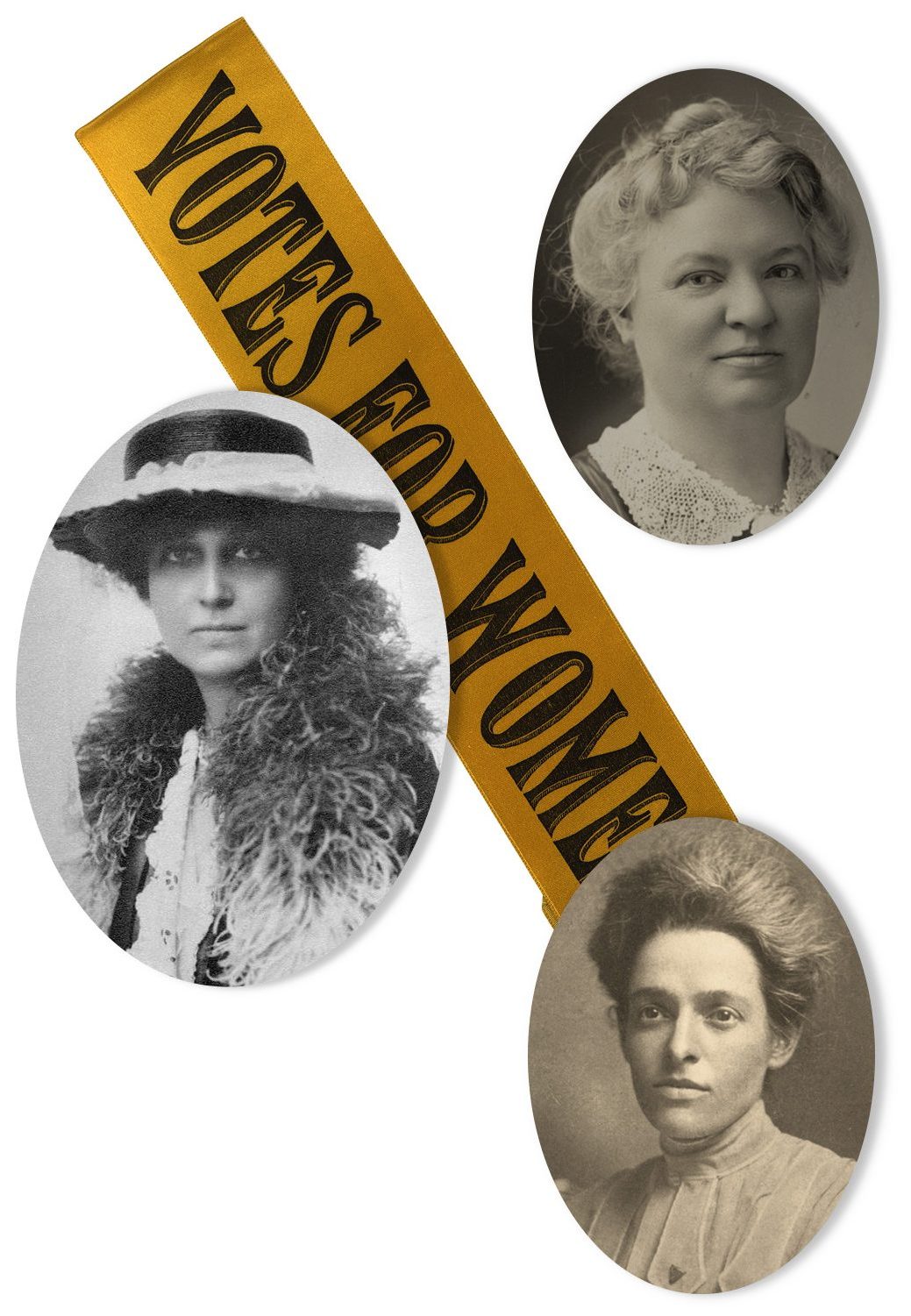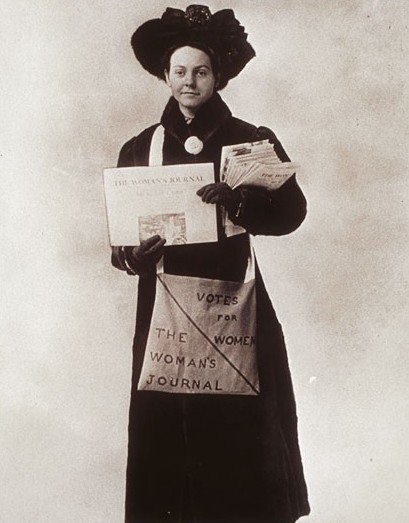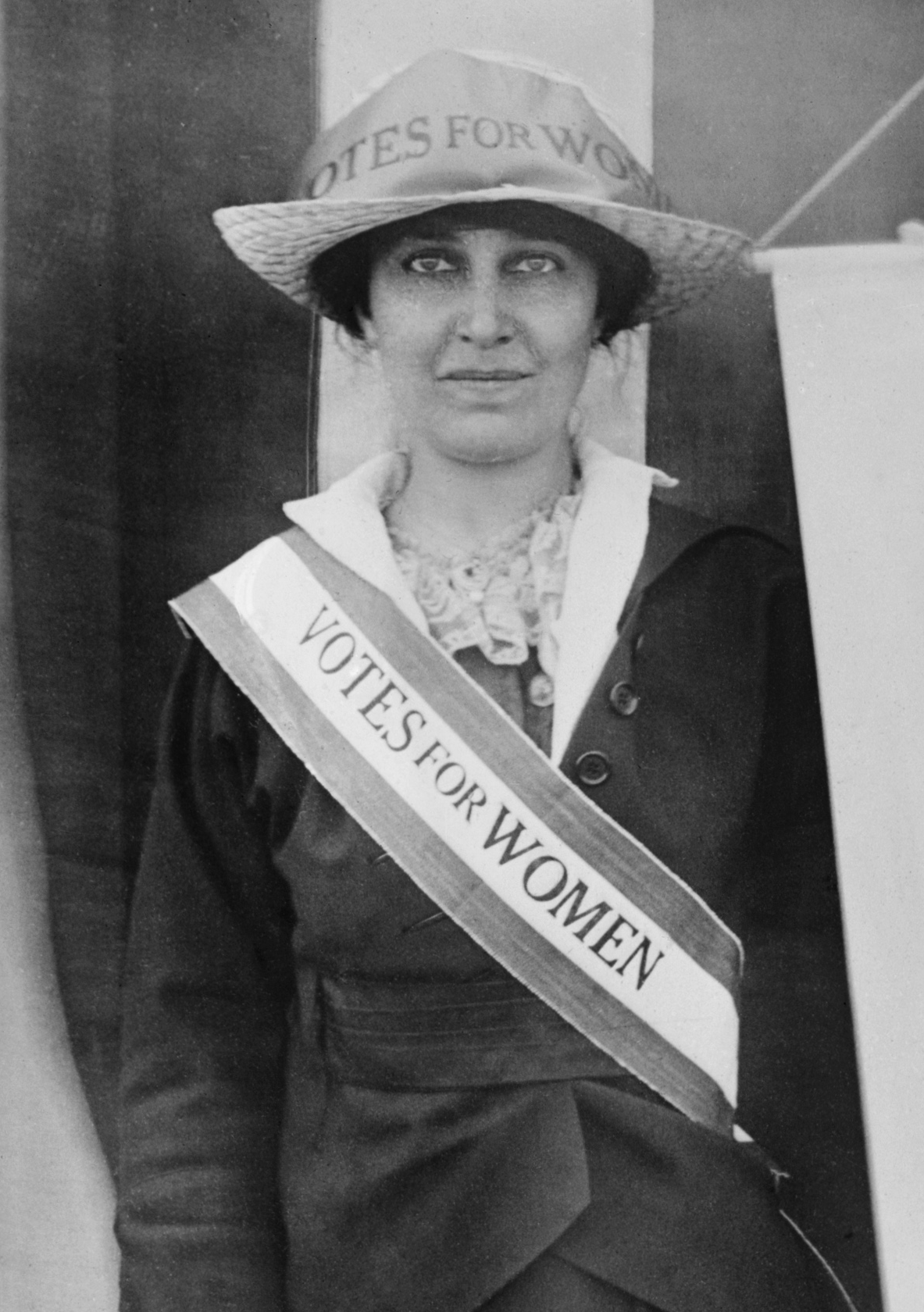“I burned with indignation”

In 1892, Hannah Knox Luscomb took her five-year-old daughter, Florence, to hear Susan B. Anthony speak. The speech made such an impression on Florence that she always began her life story with this moment, which inspired her long career as an activist. She would begin as a college student, working in concert with a group of MIT alumnae who played key roles in the quest to earn women the right to vote.
Having been raised by her mother to develop what she called “an independence of mind,” Luscomb set her sights on attending MIT when she finished high school. “Most of my boy classmates were going to MIT,” she later recalled thinking. “Why shouldn’t I go?” So she enrolled at the Institute to study landscape architecture, and with three of her male classmates, she walked six miles every day from Allston to MIT’s Boston campus and back.

Although she was one of just 12 women among 1,200 students, Luscomb described MIT as “a preview of heaven.” When a male student released a mouse under her seat in a lecture, she calmly pronounced it a nice-looking mouse. Nor was she fazed by the inhospitable reception MIT gave to suffrage activism. “Any notices of the suffrage meetings put up on the bulletin boards were immediately torn down,” she would later recount. That didn’t stop her from joining the College Equal Suffrage League. She also became an officer in the Cleofan, the society for women at MIT. “I burned with indignation at this insult to my human dignity,” she later said of being denied the right to vote.
Already a fiery and persuasive public speaker by the time she entered MIT, Luscomb became known for her open-air speeches. While still a student, she volunteered to speak in rural towns on trolley tours sponsored by local women’s suffrage groups. Wherever the trolley would stop, she’d disembark and deliver an impassioned speech while standing on top of a Moxie box borrowed from the nearest drugstore.
Fellow suffragist Katharine Dexter McCormick, Class of 1904, also took part in such trolley tours. Over two months in 1908, McCormick and other members of the Massachusetts Woman Suffrage Association (MWSA) visited three towns a day, speaking 97 times to a total of about 25,000 people. “One long scramble,” McCormick called it in a letter to her husband, “with hardly a moment anywhere for so much as a fresh washing or a shampoo.” Along the way, they also joined a circus parade; in their stop in Lawrence, Massachusetts, they went up in a hot air balloon and rained leaflets on the crowd.
In their quest to convince women they deserved a voice in democracy, the MIT suffragists were undaunted by naysayers. “Equal suffrage is not held back by opposition,” Luscomb said in a speech to the MWSA. “That helps us. We are handicapped by indifference and its resulting ignorance.”

As they sought to combat that indifference, the suffragists were not afraid to trample on convention. When police tried to block McCormick from speaking on Nantasket Beach, she waded into the ocean and gave her speech as the water lapped around her knees. McCormick went on to serve as an officer in the prominent National American Woman Suffrage Association from 1912 to 1920, managing state-level strategic plans, training delegates in the effective use of publicity, and managing NAWSA’s internal operations.
At the turn of the century, the mere fact that McCormick and Luscomb spoke outdoors was considered radical. Respectable women had previously been expected to speak only at indoor lectures. But when Mary Hutcheson Page (Class of 1888) cofounded the Boston Equal Suffrage Association for Good Government (BESAGG) in 1901 with Maud Wood Park and Pauline Agassiz Shaw, they had broken ground by adopting tactics used by British suffrage activists, including door-to-door canvassing and open-air speeches. BESAGG became the most important and most progressive (that is, least anti-immigrant) suffrage group in Massachusetts. But Page left the public speaking to others, focusing instead on fundraising, writing, and recruiting other gifted women to the cause.
Page wasn’t the only MIT alumna to wield her pen in support of suffrage. Eugenia Brooks Frothingham (Class of 1899), a well-known novelist, published an essay titled “Fears of the Anti-Suffragist” in 1914. And when Luscomb earned her MIT degree in 1909, she joined the Waltham-based architectural firm of fellow MIT suffragist Ida Annah Ryan, Class of 1905, and together they sponsored a women’s edition of the Waltham daily paper in 1913. (In 1906, Ryan had been the first woman to earn a master of science degree from the Institute and the first woman in the country to earn a master’s in architecture; hers was one of the country’s first women’s architectural firms, specializing in municipal buildings and workers’ housing.)
Ryan, a member of the Waltham Equal Suffrage League, gave Luscomb permission to take summers off to work on suffrage activism, but by 1918 Luscomb had left architecture to work for suffrage full time. Her speeches could be heard at rallies and factories across the US and even in London: at her peak, she gave 255 speeches in three years.
On the brick sidewalk at the corner of Winter and Tremont Streets across from Boston Common, Luscomb regularly stood and sold copies of the suffragist newspaper Woman’s Journal from her tote bag under a hawker’s license. She also worked for BESAGG, serving as its assistant executive secretary. Determined, stubborn, and tireless, she was motivated by what she described as an “almost compulsive desire to be busy and useful.”
Six months before the passage of the 19th Amendment in 1920 gave women the right to vote, McCormick cofounded the League of Women Voters with Carrie Chapman Catt, becoming its first vice president. Later in life, she would fund the development of the birth control pill and the construction of MIT’s McCormick Hall, providing the first housing for women at the Institute.
Meanwhile, the indefatigable Luscomb found many other causes to fight for, protesting McCarthyism, the Vietnam War, and nuclear weapons and serving as executive secretary of the Boston chapter of the Women’s International League for Peace and Freedom. Every summer into her 70s she climbed Mount Chocorua from her one-room wood-heated cabin in the White Mountains of New Hampshire. At 89, she was still chopping wood and planting a vegetable garden there. Never having married, Luscomb lived for decades in co-ops with much younger roommates. In 1976, she was profiled by the Boston Globe while living in a commune in Cambridge. “I like living with young people,” she told the Globe reporter. “It keeps me current. We’re a good left-wing group here, although I suppose I’m the most radical.”
Keep Reading
Most Popular
Large language models can do jaw-dropping things. But nobody knows exactly why.
And that's a problem. Figuring it out is one of the biggest scientific puzzles of our time and a crucial step towards controlling more powerful future models.
How scientists traced a mysterious covid case back to six toilets
When wastewater surveillance turns into a hunt for a single infected individual, the ethics get tricky.
The problem with plug-in hybrids? Their drivers.
Plug-in hybrids are often sold as a transition to EVs, but new data from Europe shows we’re still underestimating the emissions they produce.
Stay connected
Get the latest updates from
MIT Technology Review
Discover special offers, top stories, upcoming events, and more.